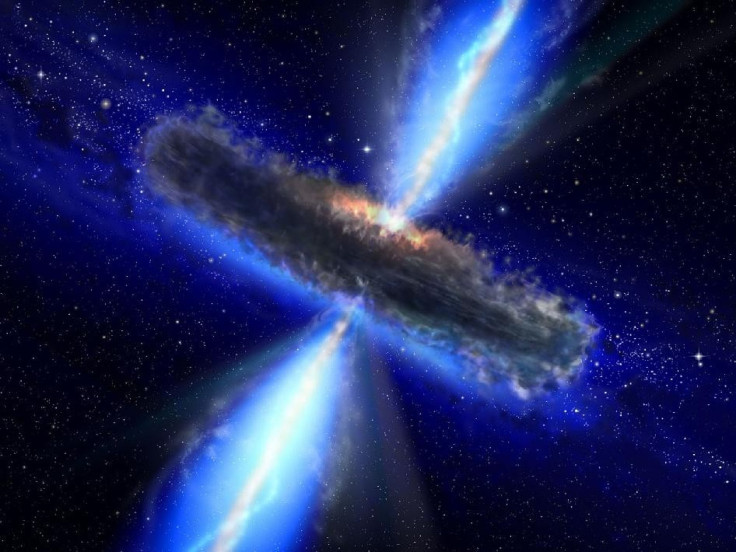Distant Quasar Holds Largest Water Reservoir Ever Found

Water covers more than half of the Earth, but astronomers have discovered a mass of water vapor that is at least 40 trillion times all the water in the world's ocean combined.
Two teams of astronomers found what they believe is the largest and farthest water reservoir ever in a distant enormous black hole known as a quasar. The teams of astronomers were each led by scientists at the California Institute of Technology, or Caltech.
"The environment around this quasar is unique in that it's producing this huge mass of water," said Matt Bradford, a scientist at NASA's Jet Propulsion Laboratory, or JPL, and a visiting associate at Caltech. "It's another demonstration that water is pervasive throughout the universe, even at the very earliest times."
Bradford also leads one of two international teams of astronomers that have described the quasar findings in separate papers accepted for publication in the Astrophysical Journal Letters, according to a press release.
The water-containing cloud found near quasar APM 08279+5255 is 12 billion light years from Earth. Therefore, the radiation we get from this quasar was emitted when the universe was just 1.6 billion years old.
Bradford said the discovery of the water itself is not a surprise, as astronomers expected water vapor to be present even in the early universe.
The water vapor in the Milky Way has a total amount that is 4,000 times less massive than in the quasar. Most of the Milky Way's water is frozen in the form of ice.
Still, water vapor is an important trace gas that exposes the nature of the quasar.
This particular quasar's water vapor is distributed around the black hole in a gaseous region spanning hundreds of light-years and its presence indicates that the gas is unusually warm and dense by astronomical standards. A light-year is about six trillion miles.
The gas is a chilly -53 degrees Celsius, or -63 degrees Fahrenheit, and is 300 trillion times less dense than Earth's atmosphere. It is still five times hotter and 10 to 100 times denser than what's typical in galaxies like the Milky Way, a press release stated.
But water vapor isn't the only kind of gas surrounding the quasar. Rather, its presence shows that the quasar is showering the gas in both X-rays and infrared radiation. Additionally, measurements of the water vapor and of other molecules, such as carbon monoxide, suggest that there is enough gas to feed the black hole until it grows to about six times its size. But whther this will happen is still unclear, as the astronomers say some of the gas may end up condensing into stars or may be ejected from the quasar.
Bradford's team started making their observation in 2008 by using an instrument called Z-Spec at the Caltech Submillimeter Observatory, or CSO. It's a 10-meter telescope near the summit of Mauna Kea in Hawaii. The instrument measures light in a region of the electromagnetic spectrum called the millimeter band, which lies between infrared and microwave wavelengths.
The second group, which is led by Dariusz Lis, a senior research associate in physics at Caltech and deputy director of the CSO, used the Plateau de Bure Interferometer in the French Alps to find water.
Last year, Lis' team was looking for traces of hydrogen fluoride in the spectrum of APM 08279+5255, but serendipitously detected a signal in the quasar's spectrum that indicated the presence of water, a press release stated. The signal was at a frequency corresponding to radiation that is emitted when water transitions from a higher energy state to a lower one.
© Copyright IBTimes 2024. All rights reserved.






















